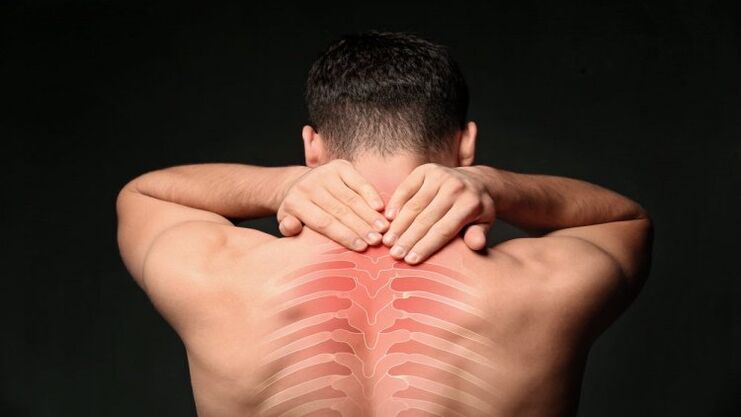Osteochondrosis is a chronically occurring pathological process in which degenerative dystrophic changes occur in the vertebrae and the intervertebral discs that lie between them. Mostly, the disease affects the cervical and lumbar spine. The thoracic spine is affected much less frequently, however, this pathology presents some difficulties in differential diagnosis as it can be confused with cardiac, pulmonary or any other disease. In this article, we will study thoracic osteochondrosis from a symptom and treatment perspective.
Clinical manifestations of thoracic vertebral osteochondrosis

The main clinical symptoms of degenerative dystrophic changes in the thoracic spine are pain syndromes located between the shoulder blades, chest, ribs, etc.
Some patients report moderate pain, others report extreme severe pain. Deep breathing, turning or tilting the torso, raising the arms, and other types of physical activity can aggravate the pain syndrome. Osteochondrosis can be confused with angina, myocardial infarction, pancreatitis, and some other conditions because of the location of the pain. A thorough differential diagnosis is important.
Due to the severe pain, the patient was unable to take a deep breath, causing him to feel short of breath. At the same time, sensitive disorders of the upper extremities often come in the form of numbness, tingling, and muscle tension in the back. In some cases, clinical manifestations are accompanied by digestive disorders such as bloating, epigastric pain, heartburn, etc.
Treatment of thoracic osteochondrosis
First, during the exacerbation of thoracic vertebral osteochondrosis, bed rest or at least semi-bed rest is recommended.
NSAIDs are used to relieve pain.
In 2014, scientists from the Kazakh National Medical University published a paper whose results established the effectiveness of a combination of muscle relaxants in the treatment of osteochondrosis.
As for muscle relaxants, their purpose is to stop muscle spasms.
The treatment plan must be supplemented with B vitamins, physiotherapy procedures. In physical therapy methods, electrophoresis, magnetotherapy, ultrasound, etc. may be used.
After cessation of the acute process, the patient may be prescribed massage, therapeutic exercise.
In some cases, the question of surgical intervention may be decided, for example, in the presence of an intervertebral hernia that compresses the spinal cord.























